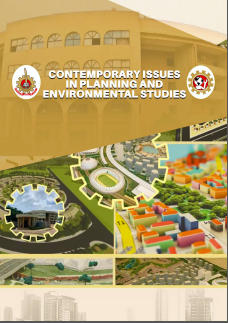Assessing the Vulnerability of Poor Households in Selected Regions of Oyo State, Nigeria
DOI:
https://doi.org/10.5281/zenodo.17052851Keywords:
Households’ Vulnerability, Poverty, Poverty line, FGT model, Oyo stateAbstract
This study examines the multifaceted dimensions of households' vulnerability to poverty in selected communities of Oyo State, Nigeria. This is premised on the fact that the environmental, social and spatial dimensions of the above issues are under-explored in the literature. Primary data on socioeconomic characteristics, assets acquired, monthly earnings and expenditures, and responses to poverty were collected among 1002 heads of households across the study area. While the socioeconomic characteristics were crosstabulated
for any spatial variation, the household poverty was measured through Foster-Greer-Thorbecke (FGT) model. However, respondents’ vulnerability to poverty was analysed using UNDRR’s Vulnerability Model. Results show that household heads, who were mostly male (79.9%) and within working ages (77.2%), had weak assets and an income base. Thus, the majority of them (61.0%) were poor
(poverty headcount (P0) = 0.61, with poverty gap index (P1= 0.2888), severity index (P2) = 0.11 and a poverty line of US$1.25 per day (₦1,029)). Less than a quarter of households that scored -1 and 0 (23.9%) were resilient, whereas the majority of others (76.1%) were vulnerable to poverty, having scored 1 – 8 on the vulnerability scale. Given their underemployment (4.07), large family size (4.04), and unemployment (3.95), among others, households had fallen into poverty. For their assets acquisition’s level (r =0.560), expenditure (r = 0.739) and indebtedness (r =0.793) (p < 0.000 in all cases), among others, they had remained vulnerable. However, they had resorted to family planning (4.03), buying food on credit (3.95), reduction of eating times (3.90), and withdrawal of wards from school (3.86), among other coping strategies. While poverty has persisted with more households becoming vulnerable, this study advocates for support in infrastructure development and housing environment improvement, as well as enhanced accessibility to social services. Stakeholders’ participation in decisions to end unemployment through skill acquisition training and social networking is vital.
Downloads
Published
Versions
- 2025-09-04 (4)
- 2025-09-03 (3)
- 2025-09-03 (2)
- 2025-07-22 (1)
How to Cite
Issue
Section
License
Copyright (c) 2025 Department of Urban and Regional Planning, LAUTECH

This work is licensed under a Creative Commons Attribution 4.0 International License.





